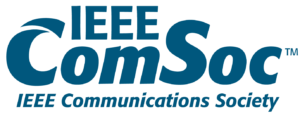(Click here to download CFP in PDF format)
The 11th International Conference on Network of the Future (NoF) is inviting authors to submit original contributions in the area of Future Internet design, with emphasis on enabling and cutting-edge technologies from the perspectives of specification, design and analysis related to network of future architecture, applications, services, management, implementation, scalability, standardization, business and legal aspects, just to name a few. , architectures, and services.
The conference aims at providing a forum for researchers, students, and professionals to exchange ideas, share their experiences, and discuss their research results around a single-track of technical sessions and a series of keynote speeches.
NoF 2020 will take place at the LaBRI Lab., Laboratoire Bordelais de Recherche en Informatique (Bordeaux Computer Research Laboratory). The LaBRI Lab. is located in the campus of the University of Bordeaux.
Topics of Interest (but not limited to):
Networks
- 5G networks
- Software-defined networks
- Virtual networks
- Overlay networks
- Wireless networks and cellular networks
- Wireless sensor networks
- Internet of Things networks
- Information-centric networks
- Enterprise networks and campus networks
- Time-sensitive networks
- Data center networks
- Optical networks
- IP networks
- Home networks
- Access networks
- SCADA networks and distributed control systems
- Smart Cities and Smart Grids
- Access, metro, backbone and core networks
- Vehicular ad hoc networks and intelligent transportation systems
- Mesh, ad hoc, and sensor networks
Enablers
- Quality of service and traffic engineering
- Network Artificial Intelligence, Machine Learning and Reasoning
- Network Data Analytics, Anomaly Detection, Feature Extraction
- Network automation and orchestration
- Autonomic, Cognitive and Intent-based Networking
- 5G Network Architecture, Services and Protocols
- 5G Control and Management Architecture
- 5G Functional Decomposition and Composition
- Advanced 5G Infrastructure Slicing and Radio Slicing
- Scalability and multi-tenancy in 5G
- Network Programmability and Softwarization
- Protocols for Ultra-Low Latency and Ultra-High Reliability
- Fog, Edge and Multi-Access Computing
- Software Defined Networking and High Availability
- Network Function Virtualization (NFV) and Orchestration
- Service Function Chaining and Virtual Network Embedding
- Big data and Fast Data Processing and Management
- CDN Architectures and Network Cache Allocation Schemes
- Advanced multimedia and real-time communications
- Performance, Optimization and Resource Dimensioning
- Security, Trust and Privacy
- Use of Blockchains in Networking and Servicing
Business and Legal Aspects
- Economic aspects
- Multi-stakeholder aspects
- Service level agreements
- Lifecycle aspects
- Process and workflow aspects
- Legal perspective
- Regulatory perspective
- Privacy aspects
Methods
- Mathematical optimization
- Control theory
- Probability theory, stochastic processes, and queuing theory
- Machine learning and artificial intelligence
- Evolutionary algorithms
- Economic theory and game theory
- Mathematical logic and automated reasoning
- Data mining and (big) data analysis
- Monitoring and measurements
- Computer simulation experiments
- Prototype implementation and testbed experimentation
- Field trials
Authors are invited to submit original contributions that have not been published or submitted for publication elsewhere. Papers should be prepared using the IEEE 2-column conference style and are limited to 8 pages excluding references (full papers) or 4 pages excluding references (short papers). They must be submitted electronically in PDF format through EDAS.
Papers exceeding page limits, multiple submissions, and self-plagiarized papers will be rejected without further review. All other papers will sustain a thorough single-blind review process.
All accepted and presented papers will be published on IEEE Xplore At least one author is required to register, at the full rate, to present accepted papers at the conference and for the paper to appear in the conference proceedings.
For the submission,
EDAS is used https://edas.info/N27007



